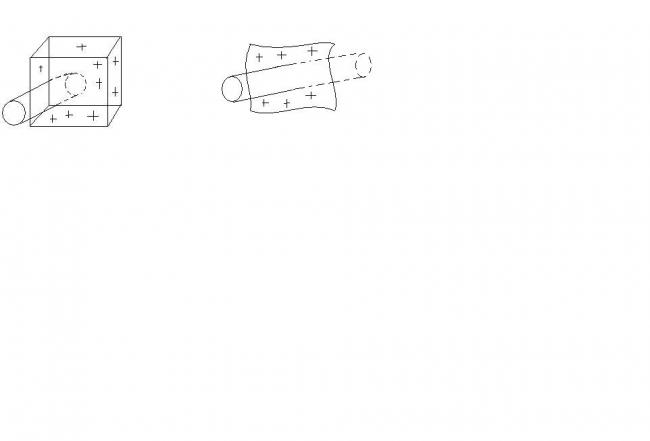I think u are telling for the thick plate....one end of the guassian suface is inside the sheet.
Then E.A=sigma.A/epsilon (as one end is inside we take only one side's surface charge density..)
we get the req result.
we know that the electric field of an infinite thick sheet is
EF = surface charge density
epsilon
i have taken the gaussian surface as shown in the figure. It ends inside the thick sheet ( its embedded inside ). Alongside the thick sheet i have shown a planar lamina as well ( that's where my doubt lies!!!)
now,
in the lamina the gaussian surface passes through it. So its electric field should be
= 2 x surface charge density
epsilon
i.e. twice of the electric field calculated above..
BUT!!
we already know that the electric field of a planar lamina is
EF = surface charge density
2 epsilon
Now, my question is how is this possible????[7][7]
(i think something is wrong in the assumptions but i am not able to figure out the mistake!!!!).
Do think about it.....[12]
I think u are telling for the thick plate....one end of the guassian suface is inside the sheet.
Then E.A=sigma.A/epsilon (as one end is inside we take only one side's surface charge density..)
we get the req result.
abhishek please go through my question again.
i am not asking the formula for thick sheet.. I am asking the validity of the formula of a planar sheet.
Do reply if u are clear about this..
look a thick sheet will be made from a huge no of thin laminas... isnt that true???
so, looking at the two gaussian surfaces we should take the electric field of a thin sheet ( think of taking out a thin sheet from that thick one and then looking at the gaussian surface ) to be twice of that calculated for the thick sheet...!!!
but actually its half of that!!!!!
do tell me if u are not clear about what my doubt is!!!